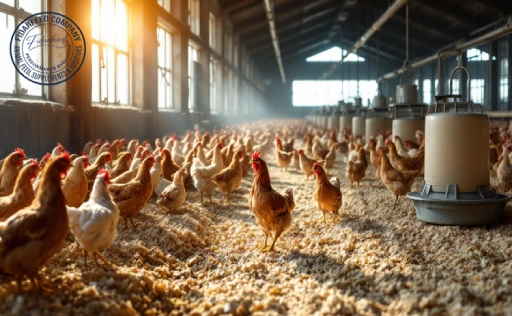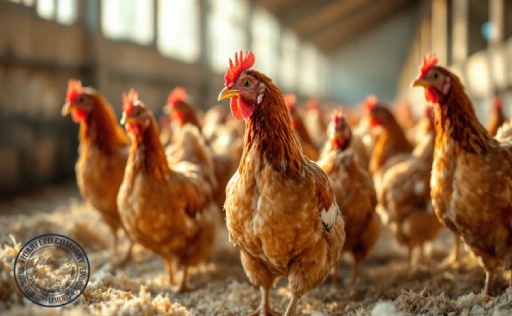Raising chickens for egg production has become a popular choice for many poultry breeders, especially those in backyard farming. Among the various chicken breeds, Campine chickens are an excellent option for both beginners and experienced farmers. These hardy, high-production birds offer a range of benefits that make them a top choice for egg production, as well as a manageable addition to any backyard farm. In this article, we’ll explore the top benefits of raising Campine chickens for egg production and backyard farming and why they stand out in the world of poultry farming.
Why Campine Chickens Are a Great Choice for Egg Production and Backyard Farming
Campine chickens are a versatile breed that thrives in both large-scale commercial farms and smaller, backyard settings. What makes them an ideal choice for egg production is their ability to adapt to a wide variety of environments while maintaining excellent productivity. Unlike many other breeds, Campines are known for their strong immune systems, which help reduce the likelihood of disease outbreaks. This natural resistance makes them easier to care for, even in less-than-ideal farming conditions.
Learn more about: Active Probiotic Yeast for Poultry
Additionally, Campine chickens are relatively quiet and docile, which is a key factor for backyard farmers who may have limited space or live in more populated areas. Their compact size allows them to thrive in smaller coops, making them the perfect choice for those looking to maximize their space while still ensuring high egg production.
Top Benefits of Raising Campine Chickens: A High-Production Breed
Campine chickens are high-production birds that consistently deliver a steady supply of eggs. They are particularly valued for their egg-laying efficiency, with hens typically producing 200–250 eggs per year. This makes them an excellent choice for both novice and experienced farmers looking to produce a reliable and consistent egg supply.
The eggs themselves are medium to large in size and have a smooth, white shell, which appeals to many consumers. Not only do Campines lay a high number of eggs, but their egg quality is also excellent, making them a popular choice for both household consumption and sale at local markets.
Learn more about: Boost Your Egg Production with Classica Layer Chickens
Moreover, Campines are hardy in various climates, and their ability to produce eggs in diverse environmental conditions further boosts their appeal. Whether it’s the heat of summer or the chill of winter, Campines manage to keep laying eggs with minimal interruption, unlike other breeds that may experience production drops during seasonal changes.
The Unique Characteristics of Campine Chickens That Make Them Ideal for Backyard Farms
Campine chickens are not only productive but also easy to manage. Their smaller size and calm demeanor make them ideal for backyard farms where space and noise can be an issue. These chickens are particularly known for being non-aggressive, which makes them great companions for other types of poultry, such as bantams or larger breeds.
Their beautiful plumage comes in a variety of colors, ranging from golden to silver, which adds an aesthetic appeal to any backyard farm. Campines are hardy birds that require minimal care in terms of housing and feeding. As long as they have access to clean water, proper nutrition, and a safe, secure coop, Campine chickens will thrive and continue to produce eggs at a high rate.
Learn more about: Decreased Egg Production in Laying Hens: Common Diseases in Chickens to Watch
Moreover, the breed’s adaptability to different environments makes them a great choice for all kinds of poultry farmers. They can easily adjust to free-range systems, where they are allowed to roam and forage, as well as to confinement systems where they are housed in coops or cages.
How Campine Chickens Contribute to Sustainable Egg Production
In today’s farming world, sustainability is a major consideration, and Campine chickens contribute to sustainable egg production in several ways. These chickens are efficient eaters, meaning they don’t require excessive amounts of feed to maintain their egg-laying capabilities. This translates to lower feed costs, making them more cost-effective for farmers in the long run.
Additionally, Campines’ adaptability to a variety of farming systems, including free-range farming, means that they can help reduce the environmental impact of traditional poultry farming. Free-range chickens, such as the Campine, contribute to soil health by naturally fertilizing the land with their droppings, which can be used as a natural fertilizer for crops.
Learn more about: The Chicken Egg Production Cycle: A Comprehensive Overview
With their low maintenance needs and ability to thrive in different farming systems, Campines offer a more eco-friendly option for poultry farmers who are committed to sustainable practices.
The Care and Maintenance of Campine Chickens: What You Need to Know
Campine chickens are relatively low-maintenance compared to some other breeds, which is why they are so suitable for backyard farming. They do not require elaborate care routines, and their sturdy immune systems make them resilient to common poultry diseases. However, like any breed, they do need some basic care to ensure they stay healthy and productive.
Campines thrive on a balanced diet that includes a mix of grains, proteins, and fresh greens. It’s important to provide them with access to clean, fresh water at all times. A diet rich in calcium is also essential for healthy eggshells. Campines are also fairly hardy when it comes to temperature fluctuations, but it’s still important to ensure they have adequate shelter from harsh weather conditions, especially in extreme temperatures.
Learn more about: Probiotics’ Effect on Egg Production: Boosting Naturally
When it comes to their housing, Campines need a well-ventilated coop with enough space to move around comfortably. Regular cleaning of the coop helps prevent diseases, and bedding material such as straw or wood shavings will keep the hens comfortable.
How to Get Started with Raising Campine Chickens in Your Backyard
Getting started with Campine chickens is relatively simple. The first step is sourcing your chickens from a reputable breeder or hatchery. Whether you’re starting with chicks or adult hens, be sure to check for signs of health such as clear eyes and healthy feathers.
Next, set up a secure and comfortable coop for your chickens. Make sure it’s spacious enough for the flock to roam and provides ample nesting space. If you’re opting for free-range farming, ensure your yard is securely fenced to protect your birds from predators.
Learn more about: How To Start Egg Laying Chicken Business: Your First Steps
Once your Campine chickens are settled into their new home, ensure they have access to high-quality feed and fresh water. Regularly monitor their health and adjust their diet if needed. With proper care and attention, your Campines will begin laying eggs in no time.
Why Campine Chickens Are Perfect for Beginners and Experienced Poultry Farmers
Campine chickens are a great choice for both beginners and experienced poultry farmers due to their ease of care and high productivity. For beginners, their docile nature and simple care requirements make them an excellent introduction to poultry farming. For more experienced breeders, their hardiness and consistent egg production make them a reliable choice for increasing output with minimal effort.
Learn more about: How Stocking Density Affects Chicken Health and Egg Laying
Whether you have a small backyard or a larger farm, Campine chickens can adapt to various setups and farming styles. Their ability to thrive in different systems makes them versatile and an excellent investment for anyone interested in egg production.
Final Thoughts: Why Raising Campine Chickens Is a Smart Investment for Egg Production and Backyard Farming
In conclusion, raising Campine chickens offers many advantages. They provide high egg production and support sustainable farming practices. Their adaptability and easy care make them ideal for small-scale farms.
Whether you’re a beginner or an experienced farmer, Campine chickens are a great investment. They deliver reliable, high-quality egg production with minimal effort. Their hardiness, calm temperament, and productivity make them a top choice for any poultry farm.
By choosing Campine chickens, you’re investing in both egg production and a sustainable farming system.









